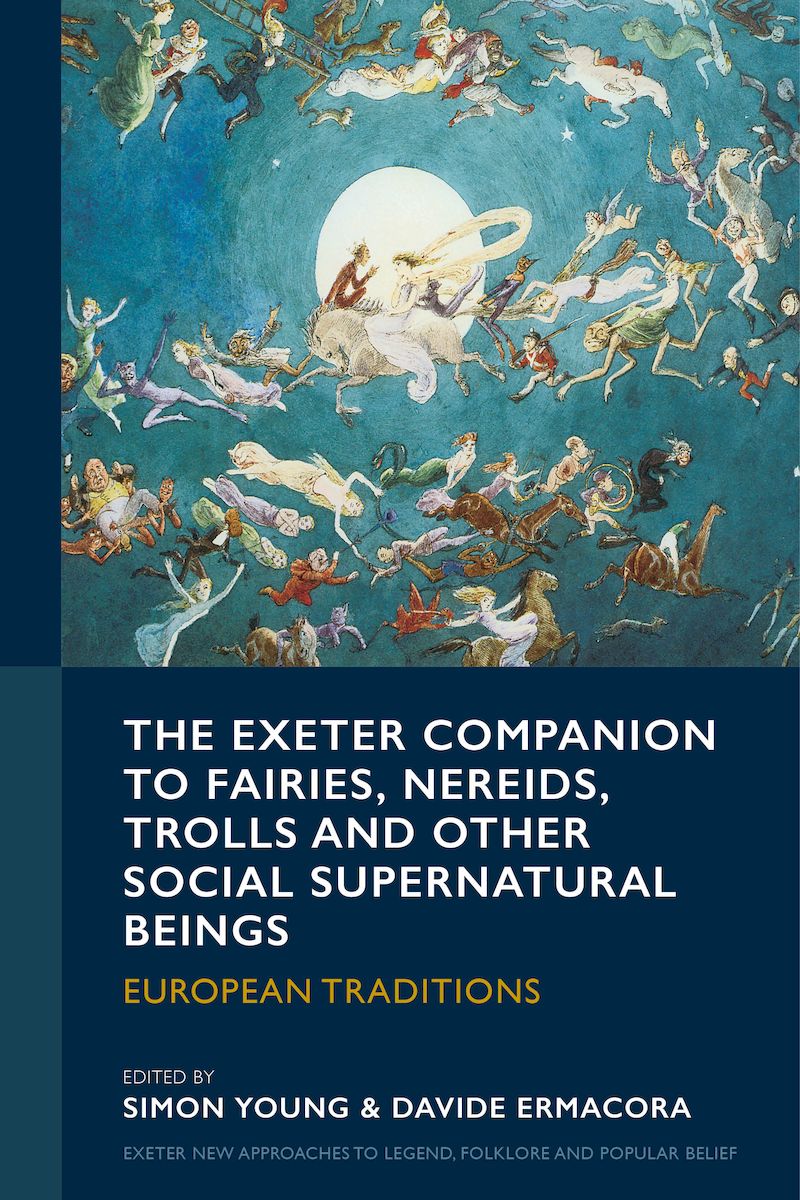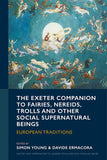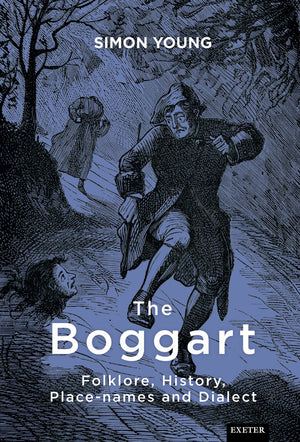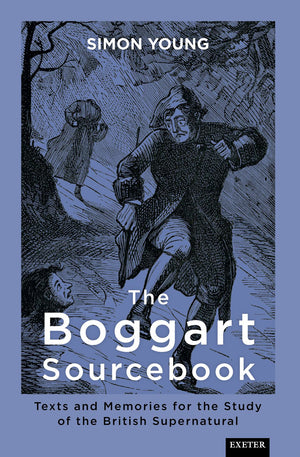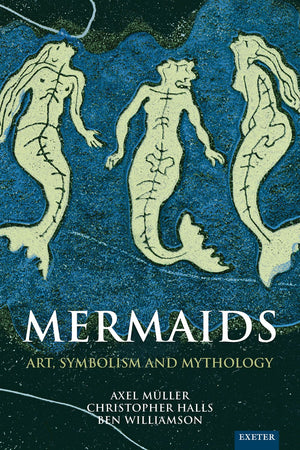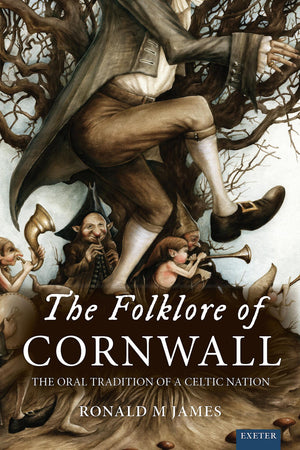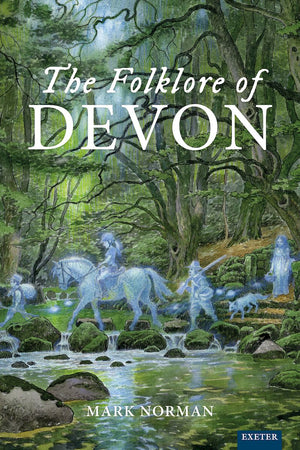University of Exeter Press
The Exeter Companion to Fairies, Nereids, Trolls and other Social Supernatural Beings
European Traditions
Couldn't load pickup availability
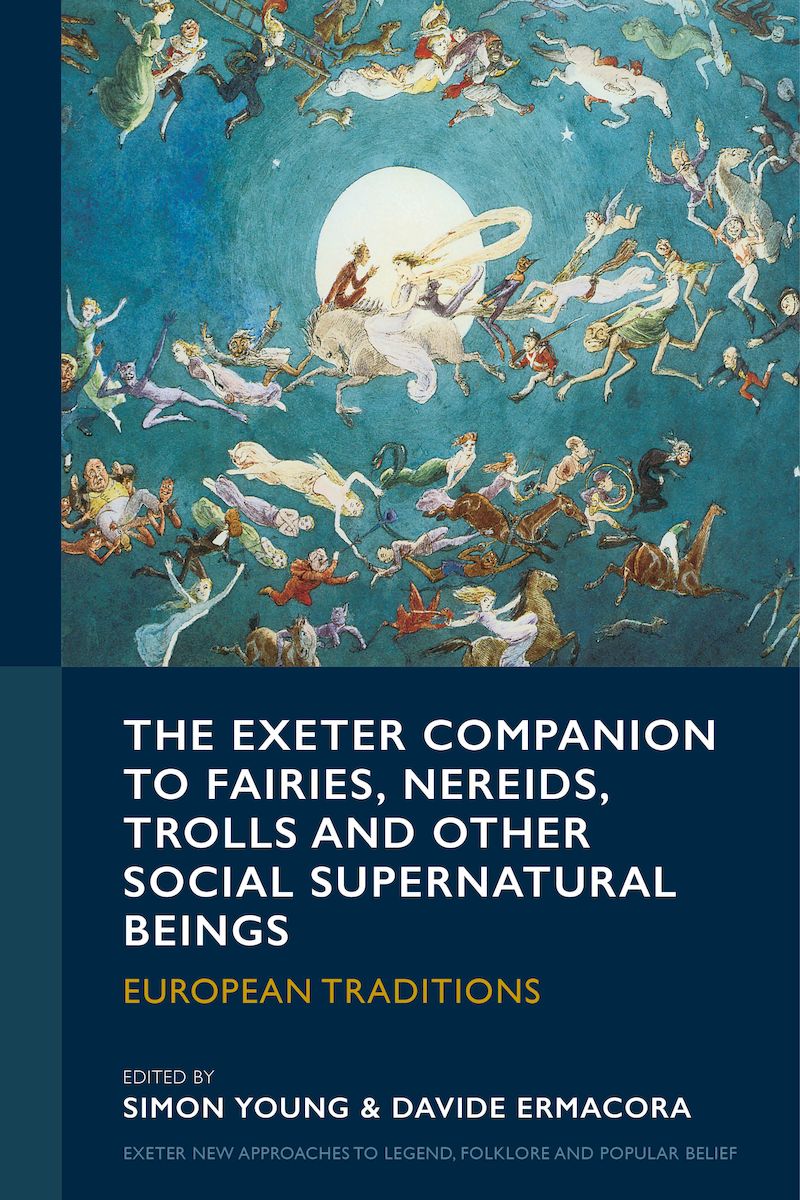
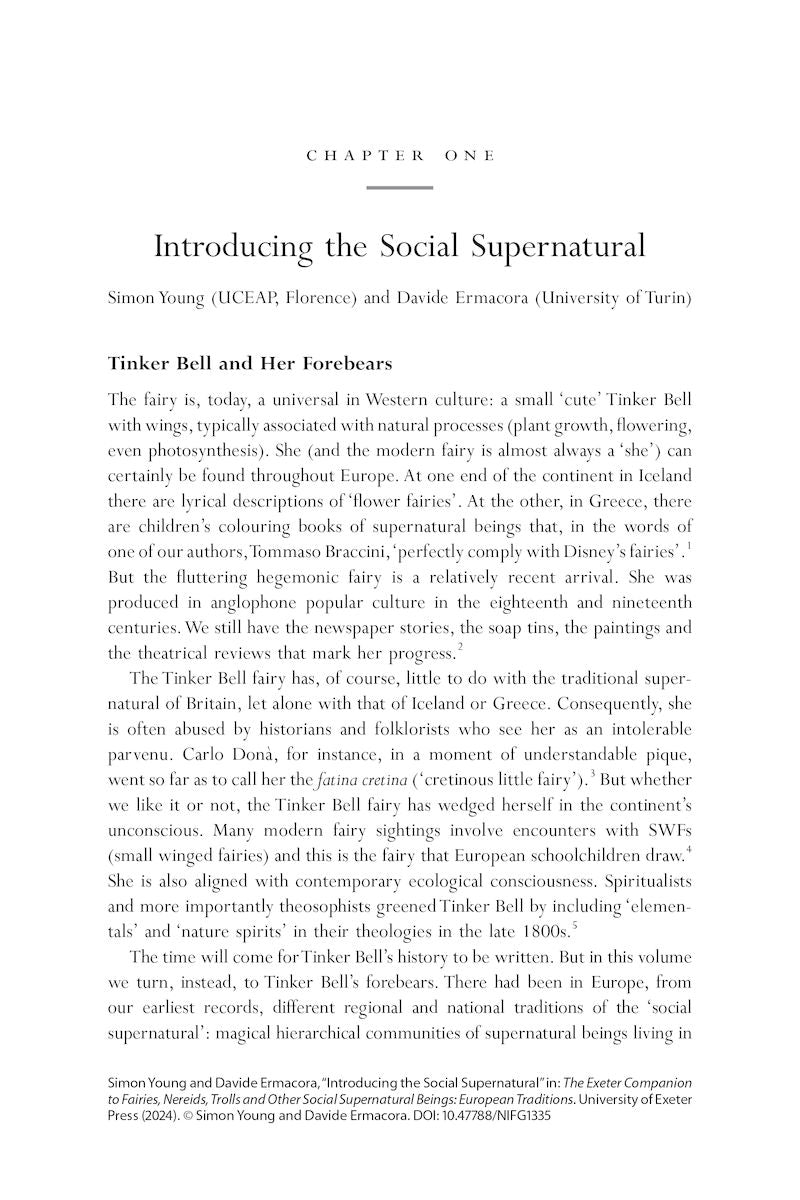
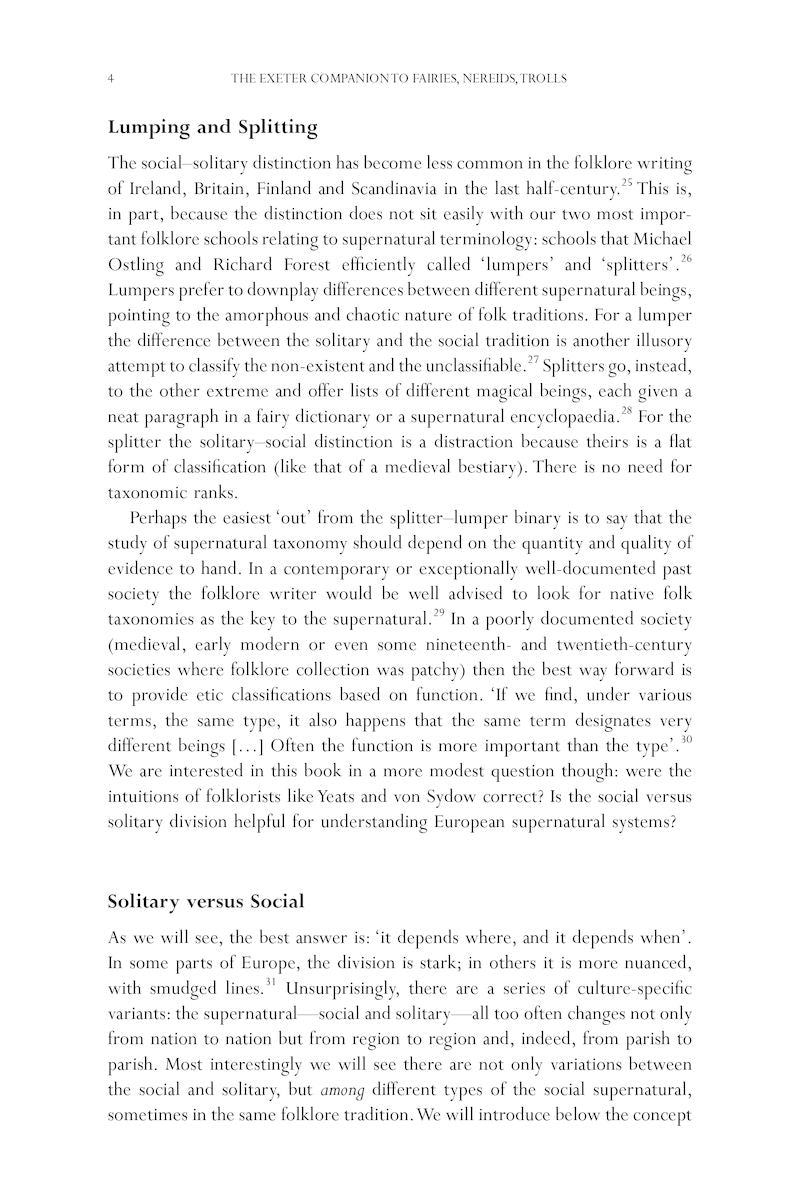
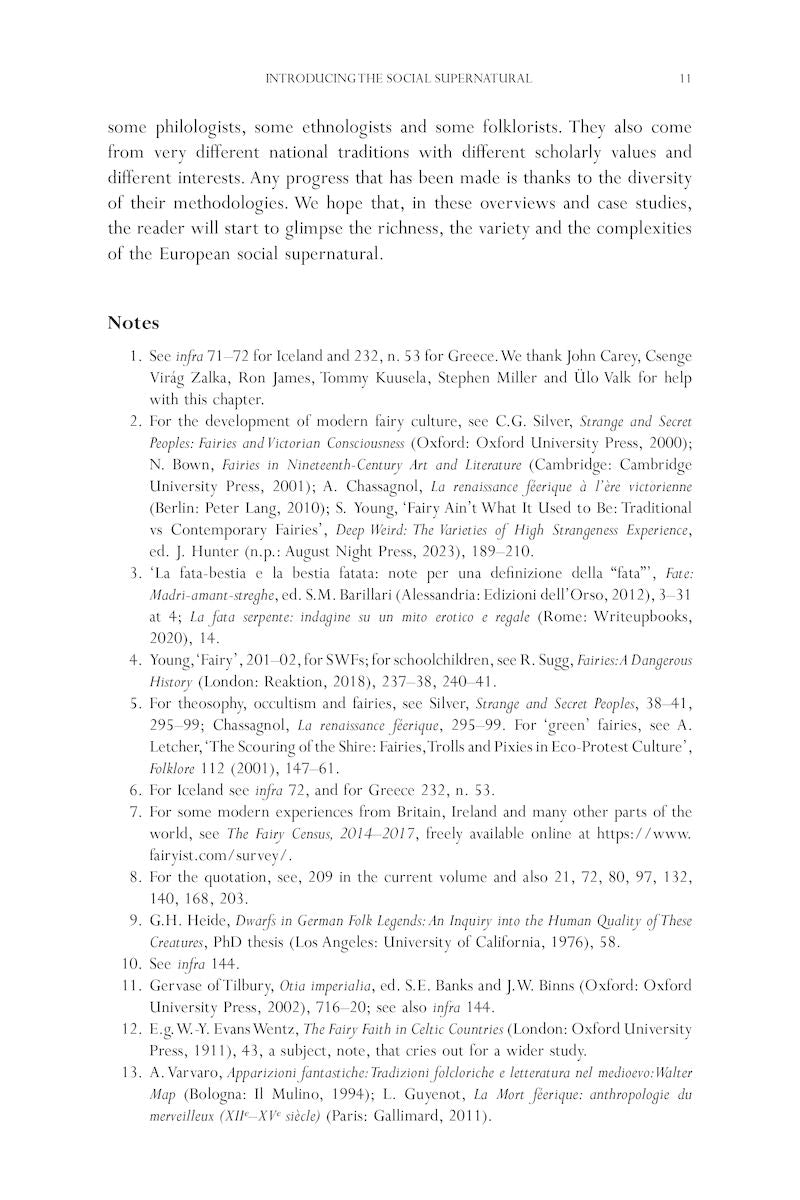
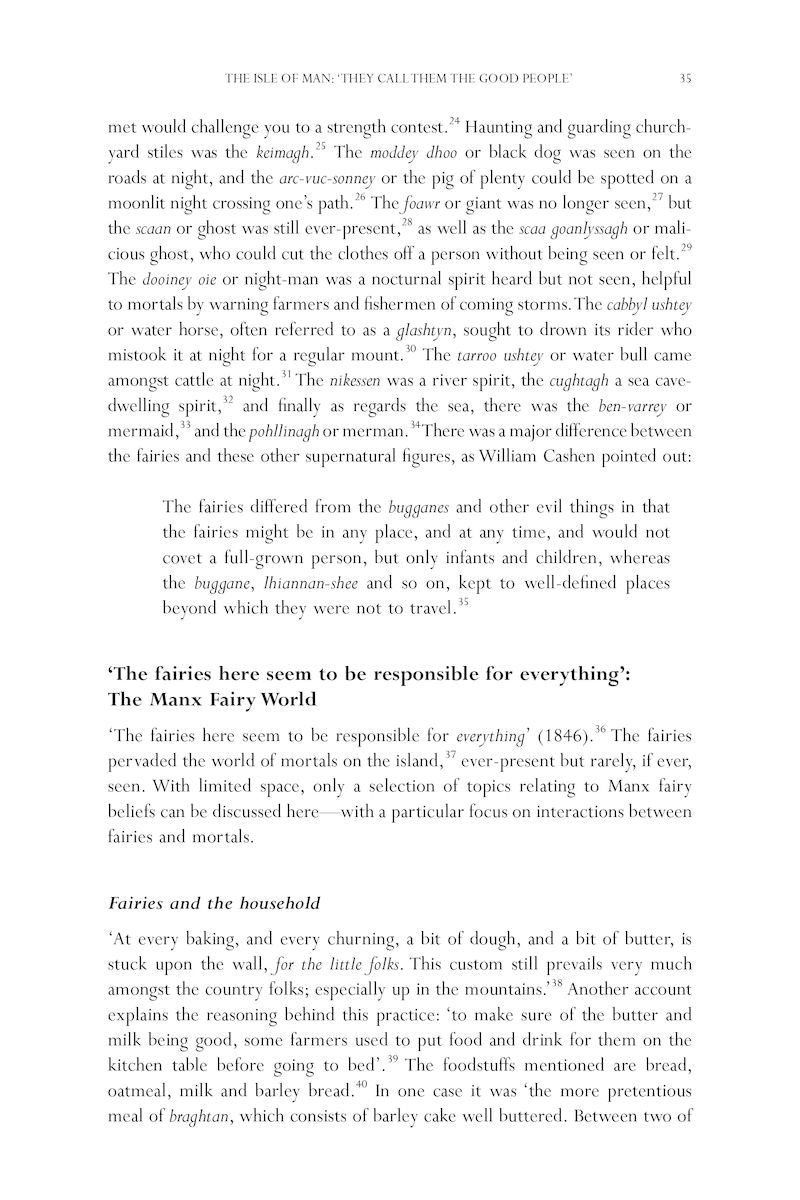
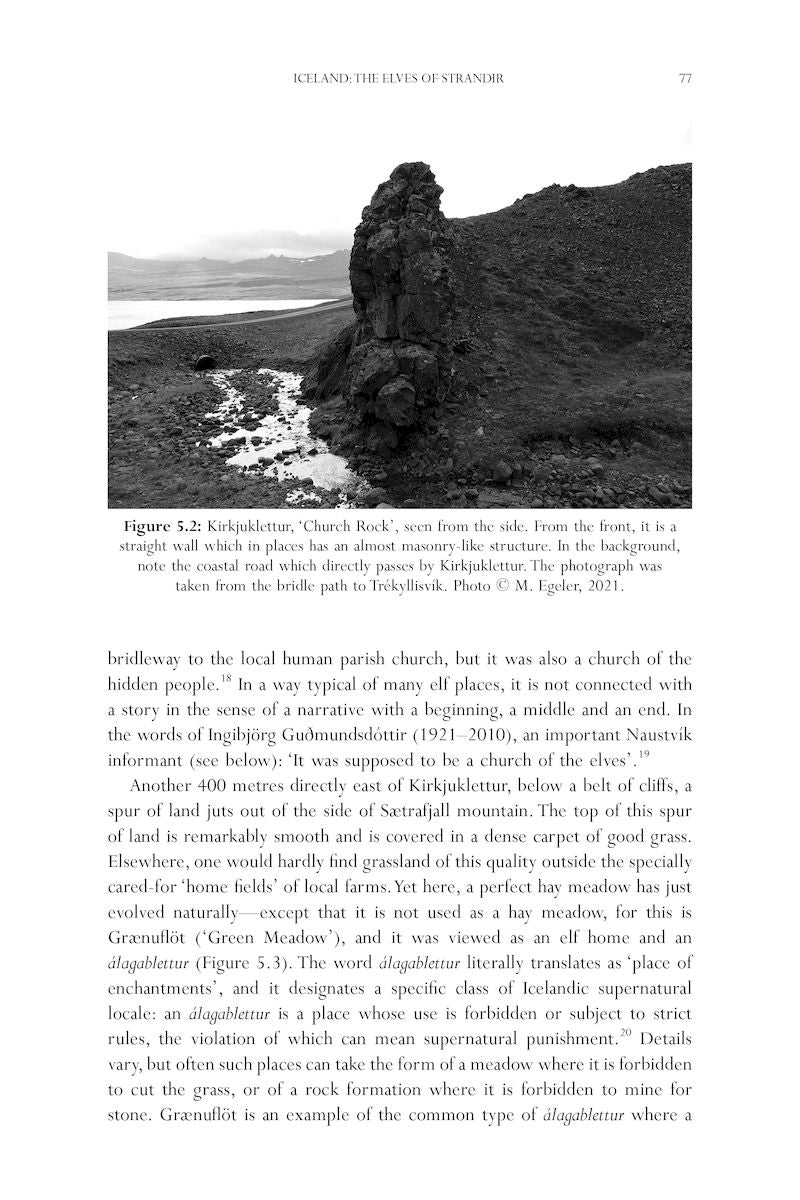
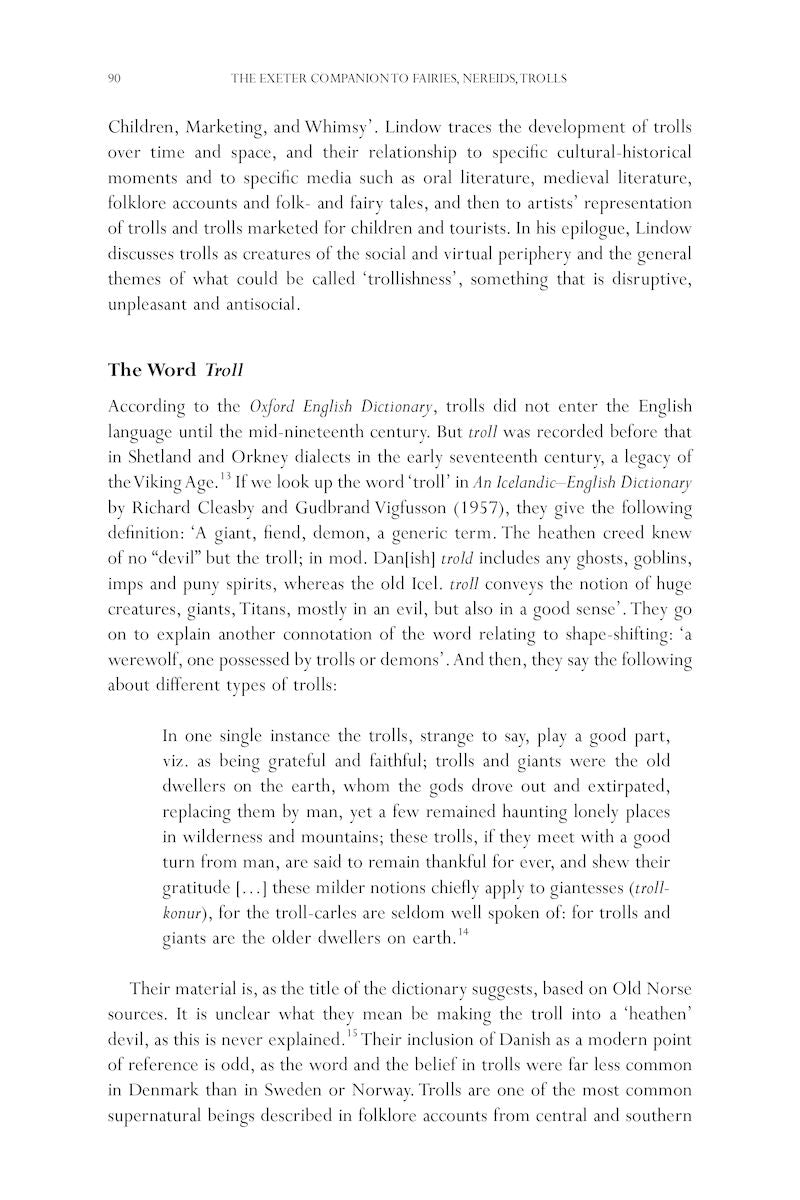
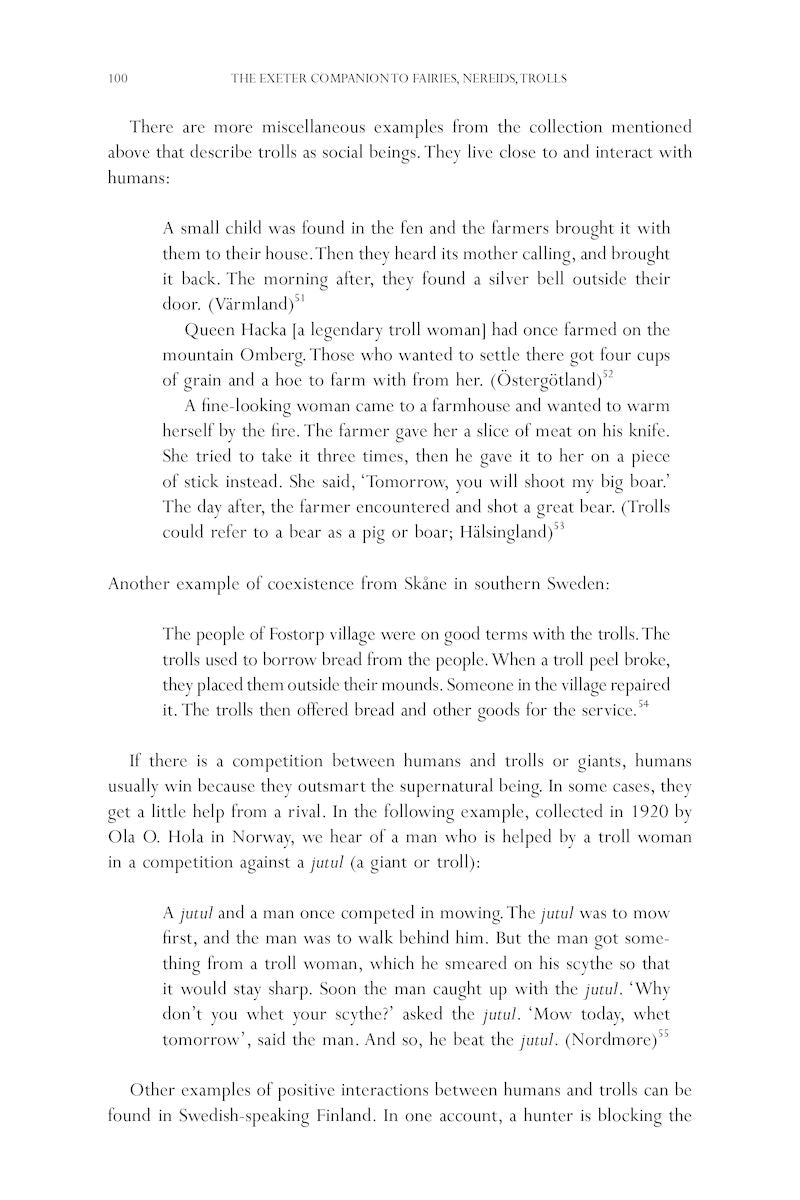
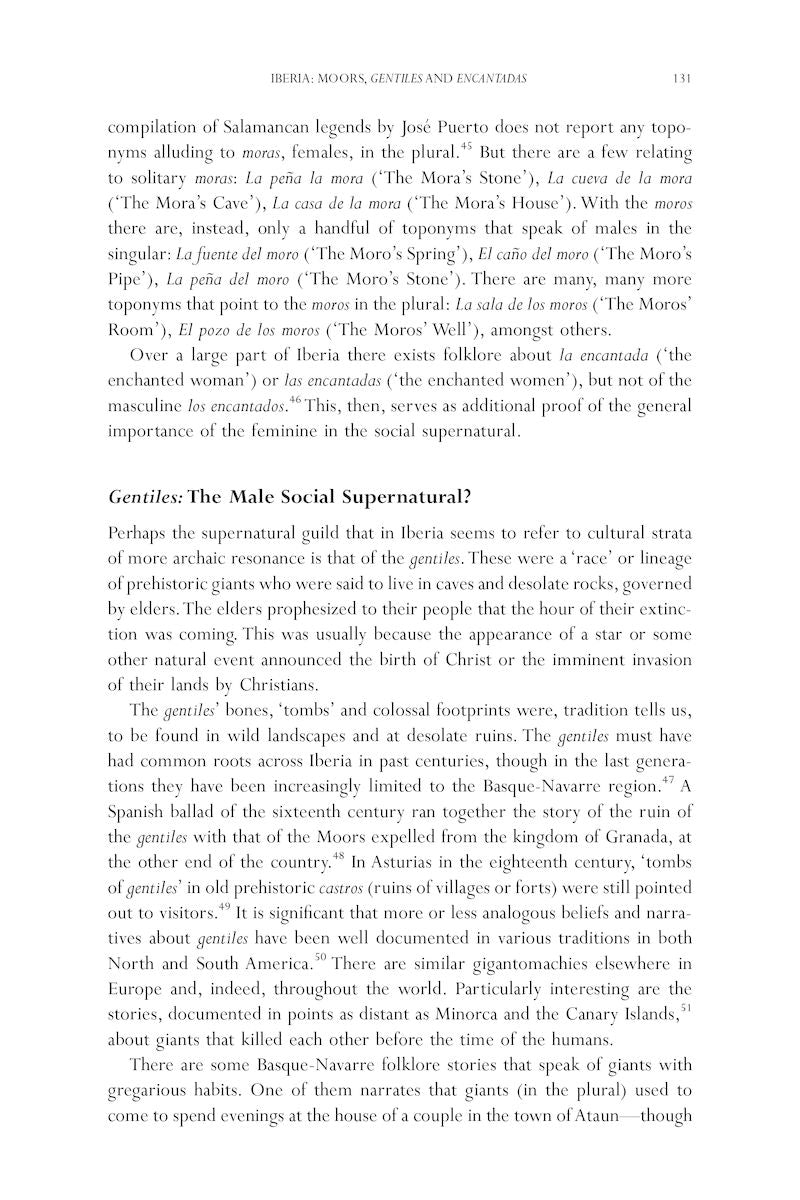
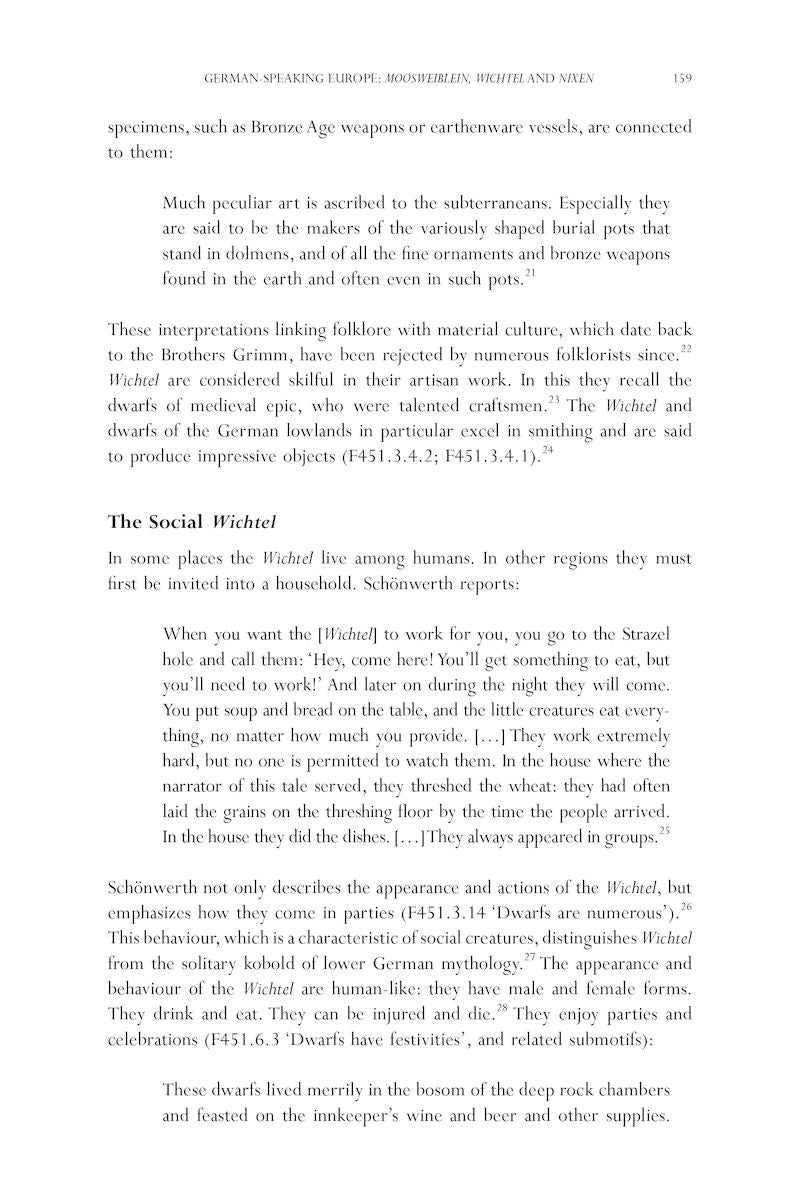
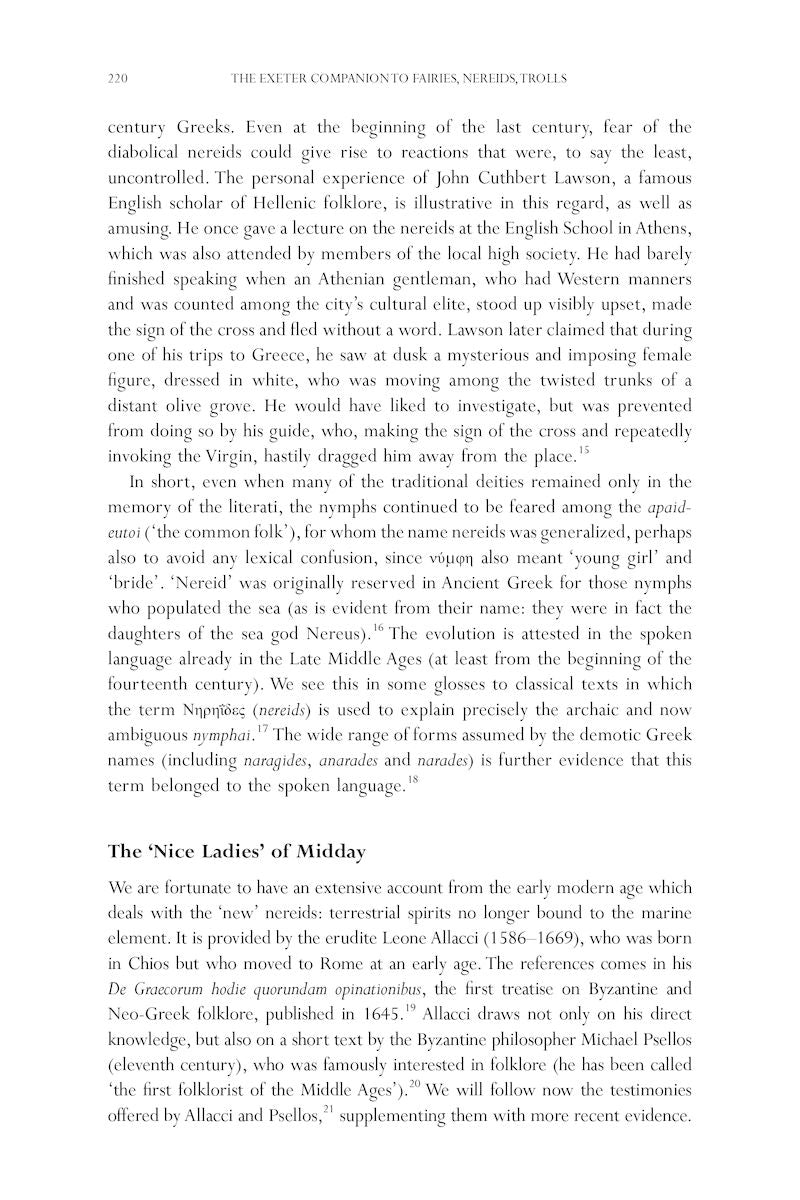
- 352 Pages
Fairies, elves, and other magical beings… they’re so much more than just children’s tales.
For centuries, Europeans believed in a parallel supernatural realm inhabited by these beings who lived much like humans in their own communities. This ‘social supernatural’ world mirrored ours with troll weddings, pixy battles, nereid picnics, dwarf migrations, and the like. Social supernatural beings were thought to interact with the human world in profound ways: they whipped up storms, ensured good harvests, and healed (and, all too often, caused) illness.
The Exeter Companion to Fairies, Nereids, Trolls and other Social Supernatural Beings dives into the rich folklore and oral traditions around the social supernatural across Europe; in fact, it pioneers the term ‘social supernatural’ as a folklore and supernatural category. Bringing together eighteen experts, this is the first comprehensive Europe-wide look at these beliefs and practices. Through in-depth studies, the volume explores how diverse cultures from Ireland to Ukraine, and from Norway to Greece, envisioned their supernatural neighbours and how these parallel societies reflected human concerns and desires. Our authors employ ancient, medieval, modern and, in some cases, contemporary material to tease out the ‘hidden people’ from obscure and, all too often, forgotten sources.
The book resurrects captivating stories and traditions. For anyone fascinated by European folklore, magic, and mythology, it provides a rich research seam with up-to-date bibliographies for a dozen European countries. It will be of use to folklorists, historians, ethnologists, sociologists and also the general reader interested in the supernatural beliefs of traditional European societies.
This heady brew of fourteen studies of “the social supernatural” from all across Europe (in a cauldron stirred by two skilled editors) promises to become a standard reference work for anthropologists, folklorists, and cultural historians seeking to expose the darker strata underlying the prettified fairies that Disney has foisted on us.
Richard Firth Green, Academy Professor, The Ohio State University
From Swedish neighbourhood trolls to the dangerously erotic bohyni of Ukraine to the terrifying Witte Wieven of Dutch folklore, Young and Ermacora have pulled together an exciting collection of essays on the social supernatural in European folk narrative. Some of the essays upend earlier conceptions of these creatures and their sociality, while others provide new and nuanced insight into less well-known traditions. Here is an exquisite volume of rigorous, engaging essays that provides a wealth of evidence for broad reassessments of the social supernatural.
Timothy R. Tangherlini, Professor of Scandinavian Folklore, University of California, Berkeley
The Exeter Companion To Fairies, Nereids, Trolls And Other Social Supernatural Beings will serve for many years as the definitive study of these assorted entities. From oral tradition spanning countless generations to more recent efforts of folklorists, there has been a fascination with these incredible figures of legend and folktale. Most analysis has remained on a local level. Comparative studies are rare. With this volume, those wishing to understand fairies and similar supernatural beings will benefit from the insights of distinguished experts as they consider the possibilities across a geographic expanse.
Ron James, author of The Folklore of Cornwall: The Oral Tradition of a Celtic Nation
This accessible and fascinating volume presents a consortium of supernatural communities from across Europe, with representatives travelling to the page from the Norse north, the Latin south, the Celtic west, and the Slavic east. The international authors explore the personalities, passions, plottings, and pecking orders of the diverse societies of elves, trolls, fairies, and spirits, which sometimes mirror – and sometimes distort – our own.
Ceri Houlbrook, Senior Lecturer, University of Hertfordshire
This is the finest collection of information yet assembled upon European supernatural beings who form societies. It is not only a notable advance in scholarship, but an exciting and entertaining journey for any interested reader.
Ronald Hutton, Professor of History, University of Bristol
The volume is a welcome step towards a more balanced world where non-human entities, such as spirits, trolls, animals, and nature, reclaim their agency. From a folkloristic perspective, the articles in this book provide insightful discussions of diverse European ethnic traditions... I hope that the readership of this valuable book... will be as wide as the social world of the supernatural once was.
Ülo Valk, Professor of Estonian and Comparative Folklore, University of Tartu
Taking the reader on a richly detailed tour though European folk traditions having to do with ‘social’ otherworldly beings, the Companion demonstrates the inestimable value of collecting and analyzing folklore for a deeper understanding of cultures, their similarities, and their differences. It is a reference work that will be enjoyable to read and fruitful to consult for many years to come.
Joseph Falaky Nagy, Henry L. Shattuck Professor of Irish Studies, Harvard University
Magnificent.
Miguel Rodriguez Garcia, University of La Rioja
...fascinating reading... These essays help us to understand the wider context both of human experience of supernatural societies, and those societies themselves, and are a valuable addition to Exeter’s growing catalogue of folklore titles.
John Billingsley
Northern Earth
...essential reading for anyone researching popular belief and supernatural traditions in Europe, regardless of whether they label themselves folklorists, historians, or scholars of religion.
Ethan Doyle White
Reading Religion
1. Introducing the Social Supernatural Simon Young and Davide Ermacora
DOI: 10.47788/NIFG1335
2. Ireland: The Tribes of the Gods and the People of the Hills John Carey
DOI: 10.47788/OFEV8836
3. The Isle of Man: ‘They Call Them the Good People’ Stephen Miller
DOI: 10.47788/YFYX8175
4. England: Small Fairies Are Beautiful Fairies Jeremy Harte
DOI: 10.47788/ULSI6409
5. Iceland: The Elves of Strandir Matthias Egeler
DOI: 10.47788/MOTK2852
6. Scandinavia: My Neighbour the Troll Tommy Kuusela
DOI: 10.47788/LHEL2533
7. The Netherlands: Witte Wieven and Other White Apparitions Yseult de Blécourt
DOI: 10.47788/YXVN8515
8. Iberia: Moors, Gentiles and Encantadas José Manuel Pedrosa
DOI: 10.47788/HUME1621
9. France: Humanlike Societies and Spaces among the Fées Andrea Maraschi
DOI: 10.47788/WYMP2420
10. German-Speaking Europe: Moosweiblein, Wichtel and Nixen Janin Pisarek and Florian Schaefer
DOI: 10.47788/ZCJG8520
11. Hungarians: Heavenly and Earthly Fairy Societies Éva Pócs
DOI: 10.47788/JVJT2813
12. Western Balkans: ‘A Vila Like a Vila’ Dorian Jurić
DOI: 10.47788/DDHP2327
13. Greece (and Italy): The Nereids, ‘Those from Outside’ Tommaso Braccini
DOI: 10.47788/NGJH2743
14. The Balts: Laume.s and Laime.s Francis Young and Saulė Kubiliūtė
DOI: 10.47788/HYYU5632
15. Ukraine: Courtship Rituals and Legends of the Bohyni Natalie Kononenko
DOI: 10.47788/UMXX7077







